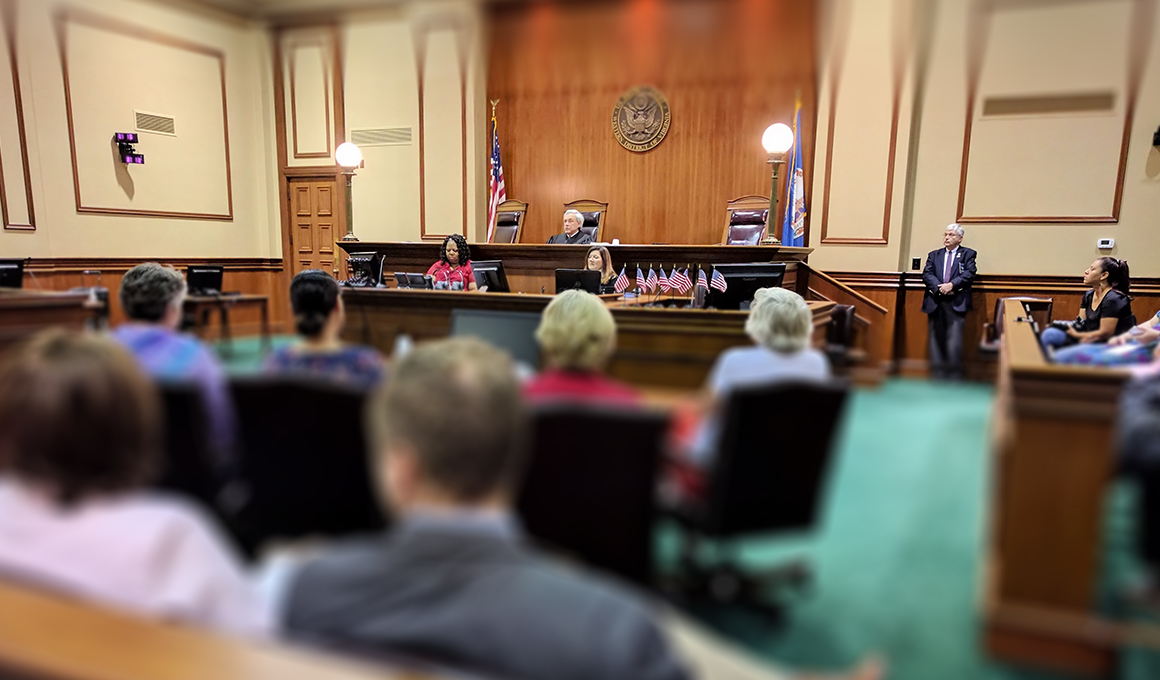The Impact of Well-Organized Trial Presentations on Jury Understanding
The Impact of Well-Organized Trial Presentations on Jury Understanding
Blog Article
Why Strong Trial Presentations Are Key to Legal Success
The importance of strong trial discussions can not be overstated in the world of lawful technique. The nuances of effectively adapting these discussions to diverse juror histories present complexities that warrant additional expedition, particularly in the context of accomplishing positive outcomes in trials.
Importance of Efficient Interaction
Reliable communication is paramount in a lawful setup, as it acts as the avenue via which arguments, proof, and legal principles are shared to courts and juries. trial presentations. Clear articulation of truths and legal criteria allows for an influential presentation that can considerably affect the decision-making procedure.
Moreover, effective interaction cultivates relationship and depend on in between lawyers and their clients, improving cooperation and making sure that all parties are aligned in their objectives. It additionally plays a critical role in court selection and engagement, where the capacity to link with jurors can impact their receptiveness to the case. Furthermore, non-verbal interaction, such as body language and eye get in touch with, contributes to the general impression a lawyer makes, reinforcing verbal messages.
Inevitably, mastering efficient interaction can result in a much more engaging and meaningful presentation, enhancing the probability of a positive decision. Therefore, legal representatives need to focus on refining their communication abilities as a cornerstone of their trial prep work and technique.

Crafting a Compelling Narrative
Efficient interaction lays the foundation for crafting a compelling story in legal trials. A well-structured narrative not just involves the court but likewise clarifies complicated legal problems. The objective is to offer the realities in a way that resonates emotionally and realistically with the audience, enabling them to comprehend the situation from the client's point of view.
To accomplish this, attorneys must determine the main style or message of the situation, which acts as the foundation of the narrative. Each item of evidence and witness statement should be woven into this style, enhancing it as opposed to diminishing it. This creates a cohesive story that is very easy for the court to follow.
Additionally, using relatable personalities-- be it the plaintiff, accused, or vital witnesses-- can humanize the instance, making it more remarkable. Lawyers should likewise think about the pacing of their narrative, making certain that essential moments are highlighted which the tale unfolds in a sensible progression.
Ultimately, an engaging narrative changes the presentation of realities right into a convincing argument, assisting the court toward a positive final thought while making certain that the intricacies of the legal system stay easily accessible and reasonable.
Utilizing Visual Help
Aesthetic help play an essential duty in boosting the comprehension and retention of information during lawful trials. By providing complicated data and disagreements aesthetically, attorneys can simplify detailed information, making them extra obtainable to jurors. Graphes, graphs, and images can successfully illustrate essential factors, allowing jurors to comprehend vital realities swiftly.
Using visual aids not just aids in clarity however likewise engages the target market's interest. Jurors are more most likely to bear in mind details provided visually than with spoken explanations alone. For example, showing anonymous timelines via aesthetic depictions can clarify the sequence of events, assisting jurors recognize the context of the case.
Furthermore, visual aids can aid to highlight variations forthcoming, making them much more pronounced. When used purposefully, they can emphasize the stamina of the argument or subject weaknesses in the opposite side's situation. trial presentations. Using modern technology, such as interactive discussions or animations, can further enhance engagement and understanding
Engaging the Jury Emotionally
Typically, successful trial presentations require more than just logical arguments and factual evidence; they must also resonate on a psychological degree with jurors. Involving the court mentally can substantially influence their understanding of the case and their ultimate verdict. By crafting a story that humanizes the events entailed, lawyers can produce an emotional link that urges jurors to feel sorry for the clients' experiences.
To achieve this, lawyers need to concentrate on storytelling techniques that highlight the individual risks and real-life ramifications of the case. This might include sharing touching anecdotes or making use of powerful visuals that evoke sensations of empathy, anger, or sadness. Such components can assist jurors see beyond the lawful complexities and recognize the human measurements of the situation.
Moreover, the usage of tone, body language, and eye call during the discussion can further improve psychological engagement. Therefore, psychological engagement is a vital component of a compelling test discussion.
Adapting to Audience Assumptions
Recognizing the expectations of the jury is crucial for a successful trial discussion. Jurors featured presumptions affected by individual experiences and social narratives, which can considerably affect their decision-making. Tailoring your presentation to align with these expectations can improve your influential power.

Furthermore, establishing Read More Here reputation is vital. Jurors anticipate attorneys to present proof and debates that are not only engaging yet also fairly appear - trial presentations. This consists of being transparent regarding the staminas and weak points of your case, which fosters depend on and regard
Last but not least, anticipate jurors' questions and concerns. Dealing with prospective questions proactively demonstrates an understanding of their point of view and a commitment to clarity. By adapting your presentation to meet audience assumptions, you develop an even more engaging story, eventually improving directory the possibilities of a beneficial verdict.

Conclusion
To conclude, solid test discussions are vital to accomplishing legal success. Reliable interaction, a compelling story, critical use visual help, psychological engagement with the court, and adjustment to audience assumptions collectively enhance juror understanding and retention of critical details. These aspects not just develop the reliability of the presenting event however also dramatically influence juror perceptions and decision-making. Understanding the art of trial discussion is vital for lawful specialists intending to protect desirable outcomes.
Report this page